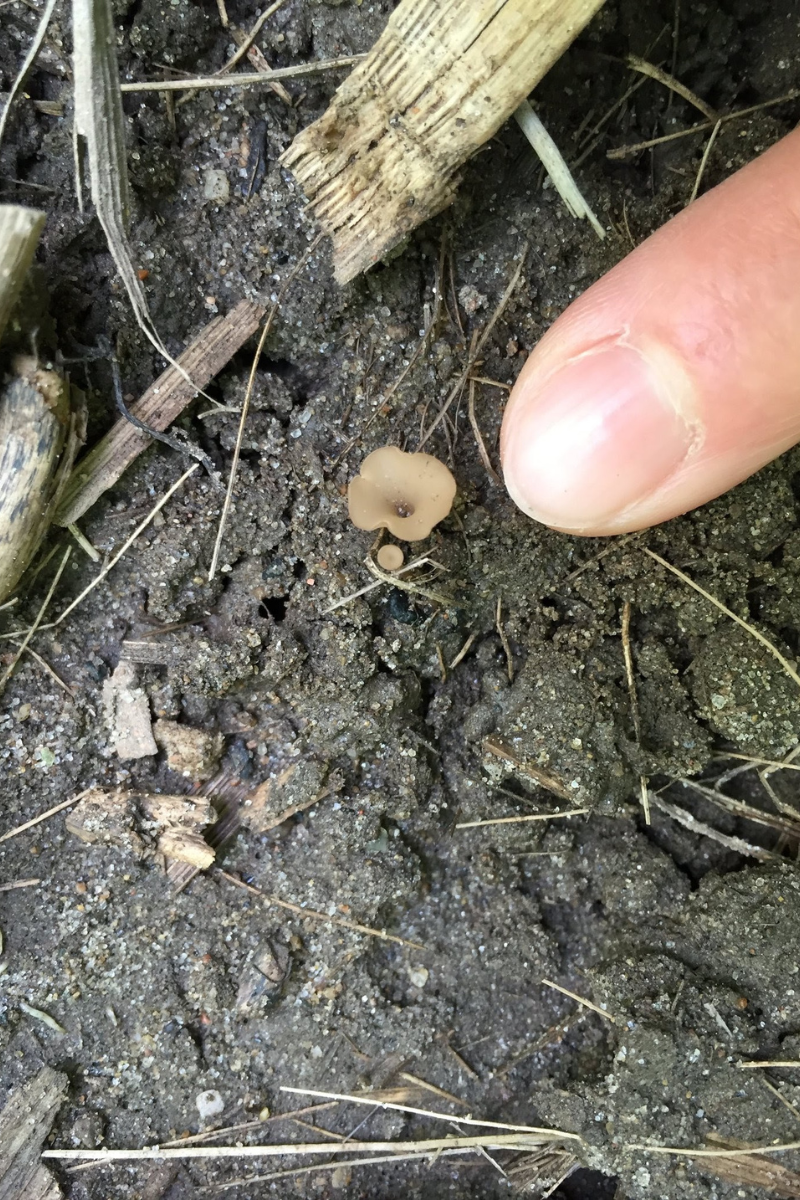Common soybean diseases
Sclerotinia stem rot (or white mould) is one of the most significant diseases causing significant economic losses in Quebec and Ontario’s soybean fields.
Sclerotinia stem rot can reduce yields by as much as 20%.
White mould is caused by a fungus known as Sclerotinia sclerotiorum, which develops in cool, moist conditions. When infection is present, it often causes plant desiccation, poor pod fill, and rotted seeds.
Disease cycle
The white mould fungus overwinters in the soil in the form of sclerotia. Sclerotia can contaminate the soil for 3 to 10 years and are resistant to temperature changes such as heat, freezing or thawing.

They are characterized by irregularly shaped, compact, black masses measuring from 0.3 to 2 cm in length that resemble mouse/rat droppings. They are mostly found inside stems and in harvested pods. During cold seasons, they mostly remain in the soil and on plant debris.
In spring, they germinate and produce apothecia, which are mushroom-like structures. When temperatures reach between 11°C and 15°C, the mushrooms release spores that are carried by the wind.
If weather conditions are favorable, they infect the plants just as their flowers are opening (R2 stage). The infection stage extends over 2 to 3 weeks during flowering.
Other foliar diseases
Septoria brown spot of soybean (Septoria glycines) is another foliar disease that is observed most often in soybean stands. In the early disease stage, small, dark brown, irregularly shaped spots appear on the leaves of plants. In warm, humid weather, the disease attacks the base of plants and spreads upwards.
Later in the season, the leaves turn rust brown or yellow and drop. In general, brown spot does not affect yield, but it may affect soybean quality. On the other hand, a field that is severely infected by the disease can lose between 5% and 10% of its yield.
Frogeye leaf spot (FELS) can appear at any stage of soybean development. It is characterized by small brown water-soaked spots on plant leaves. With time, the spots grow (1 to 5 mm) and become more or less circular.
They also change colour, turning grey with a dark purple centre. When the disease is advanced, the leaves die and drop. FELS can spread to the stem, the pods and the soybeans.
Pod and stem blight (Phomopsis phaseoli) is considered a fairly minor disease in Québec and Ontario but it is still frequently observed on late-season plants and in soybean lots during harvest. Rainy damp weather early in the season favours the disease’s reproductive cycle and the infection of plants.
However, it is at the end of the season with the arrival of hot, humid weather that the disease has the potential to spread quickly and affect harvest quality.
Management strategies resulting in luxurious vegetative growth are not encouraged. Significant leaves on plants increase moist conditions which in turn will promote the development of diseases.
As well, when planting a sensitive variety, a planned preventative treatment could be put in place if conditions materialize themselves during the growing season.
What to do in the event of infection?
Fungicides are not curative; rather, they are preventative. So, plan to spray when the conditions are right and before symptoms appears. For example, if Sclerotinia rot is present, application of a fungicide will become necessary in subsequent years, due to the high risk of reinfection.
Prevention after an infection:
- Avoid tilling;
- Practice crop rotation with less vulnerable crops, such as cereals or corn;
- Increase spacing between rows to ensure good airflow;
- Keep the fields clean (free of weeds or plant debris);
- Choose early varieties that are less susceptible;
- Plant healthy seeds or seeds treated with fungicide.
Foliar fungicides
Advantages of using fungicide
- May prove effective in fighting other diseases;
- May preserve and even foster increased yield.
Treatment stages
Fungicides should be applied preventatively, namely in the early growth stages of the soybean. Indeed, timing of the application is essential for good disease management.
In the case of Sclerotinia stem rot, initial spraying is done at stage R1 (beginning bloom) followed by a 2nd application 14 days later in stage R2 (full bloom).
For other foliar diseases, such as brown spot and FELS, treatment is applied at stage R3 (beginning pods).
Here are the different fungicides available on the market
- Cotegra ™
- Delaro MD
- Acapela ™
- Miravis® Neo
If you have further questions, please speak to your Prograin representative.
